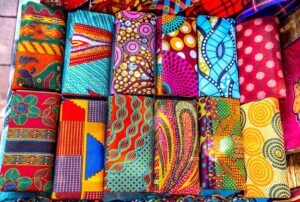The fashion industry is a dynamic and ever-evolving sector that plays a significant role in shaping trends and influencing consumer behavior. It encompasses various aspects, such as design, manufacturing, marketing, and clothing and accessories retailing. With its global reach and multi-billion dollar revenue, the fashion industry offers numerous opportunities for aspiring entrepreneurs and established clothing brands.
Factors Contributing to the Success of Clothing Brands

The success of clothing brands can be attributed to a combination of factors. Firstly, having a clear brand identity and vision is crucial. Clothing brands that understand their target audience and consistently deliver on their promise tend to resonate with consumers. Quality products, innovative designs, and attention to detail are vital in attracting and retaining customers in the competitive fashion market.
Secondly, effective supply chain management plays a significant role in the success of clothing brands. From sourcing materials to production and distribution, optimizing the supply chain ensures the timely delivery of products and helps maintain customer satisfaction. Streamlining operations and adopting sustainable practices can also contribute to a brand’s success in the long run.
Lastly, building strong relationships with suppliers, retailers, and other industry stakeholders is essential for clothing brands. Collaborating with reliable partners and fostering mutually beneficial partnerships can help increase brand visibility and expand market reach.
Understanding the Target Audience in the Fashion Industry
Understanding the target audience is a crucial aspect of any successful clothing brand. By gaining insights into their preferences, lifestyles, and purchasing behavior, brands can tailor their products and marketing strategies accordingly.
Market research and consumer surveys can provide valuable data on consumer preferences, helping clothing brands identify trends and opportunities. Analyzing demographics, psychographics, and behavioral patterns can also help create targeted marketing campaigns that resonate with the desired audience.
Segmenting the target audience based on age, gender, income level, and geographic location enables clothing brands to cater to specific needs and preferences. This personalized approach enhances customer loyalty and fosters brand advocacy.
Brand Positioning and Differentiation in the Fashion Industry
In a highly competitive market, brand positioning and differentiation are crucial for the success of clothing brands. Effective brand positioning helps establish a unique identity and sets a brand apart from its competitors.
To achieve successful brand positioning, clothing brands must clearly define their target market and their unique value proposition. This involves understanding the needs and desires of the target audience and aligning the brand’s messaging and image accordingly.
Differentiation can be achieved through various means, such as innovative design, superior quality, sustainable practices, or a distinct brand personality. By highlighting these unique aspects, clothing brands can attract and retain customers who resonate with their values and offerings.
Effective Marketing Strategies for Clothing Brands

Marketing plays a pivotal role in the success of clothing brands. With the rise of digital platforms and social media, there are numerous opportunities for clothing brands to reach their target audience effectively.
A multi-channel marketing approach is recommended, encompassing both traditional and digital channels. This may include print and television advertisements, influencer collaborations, social media marketing, content marketing, and email campaigns. By utilizing a mix of these strategies, clothing brands can maximize their reach and engage with their target audience at various touchpoints.
Creating compelling and visually appealing content is essential in the fashion industry. High-quality imagery, videos, and captivating storytelling can help clothing brands create a strong brand identity and connect with consumers on an emotional level.
Utilizing Social Media in the Fashion Industry
Social media has revolutionized the way clothing brands interact with their audience. Platforms like Instagram, Facebook, and TikTok offer a direct channel for brands to showcase their products, engage with customers, and build a loyal following.
To effectively utilize social media, clothing brands should develop a consistent content strategy that aligns with their brand identity. This may include posting high-quality product images, behind-the-scenes footage, fashion inspiration, or user-generated content. Engaging with followers through comments, likes, and shares helps create a sense of community and fosters brand loyalty.
Collaborating with influencers and leveraging their reach and influence can also be an effective social media strategy for clothing brands. Partnering with influencers who align with the brand’s values and target audience can help increase brand visibility and credibility.
Collaborations and Partnerships for Clothing Brands
Collaborations and partnerships have become increasingly popular in the fashion industry. By joining forces with other brands or designers, clothing brands can tap into new markets, attract a different customer base, and create buzz around their products.
Successful collaborations are built on shared values, complementary aesthetics, and a mutual understanding of each brand’s target audience. By leveraging the strengths of both parties, clothing brands can create unique and limited-edition collections that generate excitement and drive sales.
Collaborations can take various forms, including co-branded collections, designer partnerships, celebrity endorsements, and brand ambassadorships. These strategic alliances help clothing brands expand their reach and stay relevant in a fast-paced industry.
The Role of Influencers in Promoting Clothing Brands
Influencer marketing has become a powerful tool for clothing brands to reach their target audience and drive sales. Influencers have established credibility and a large following on social media platforms, making them influential in shaping consumer opinions and purchasing decisions.
Clothing brands can partner with influencers to promote their products through sponsored content, product reviews, or endorsements. The key is to find influencers whose values align with the brand and whose followers match the target audience.
When executing influencer marketing campaigns, it is essential to establish clear objectives, set guidelines for content creation, and measure the campaign’s effectiveness. By tracking key metrics such as engagement, reach, and conversion rates, clothing brands can evaluate the success of their influencer partnerships and make data-driven decisions for future collaborations.
Incorporating Sustainability and Ethical Practices in Clothing Brands

There has been a growing demand for sustainable and ethically produced clothing in recent years. As consumers become more conscious of their purchases’ environmental and social impact, clothing brands must adapt their practices to meet these expectations.
Incorporating sustainability and ethical practices involves various aspects, such as using eco-friendly materials, reducing waste in production, ensuring fair labor practices, and promoting transparency in the supply chain. By adopting these practices, clothing brands can appeal to the growing segment of environmentally conscious consumers and differentiate themselves in the market.
Communicating these efforts to consumers is crucial. Clothing brands should transparently share their sustainability initiatives and educate their audience on the importance of conscious consumption. This can be done through storytelling, sharing impact reports, and involving customers in the brand’s sustainability journey.
Case Studies of Successful Clothing Brands
Examining case studies of successful clothing brands provides valuable insights into the strategies and approaches that have contributed to their success. By analyzing these brands’ journeys, aspiring entrepreneurs and established clothing brands can gain inspiration and learn from their experiences.
One such case study is the rise of athleisure brand Lululemon. By focusing on high-quality yoga and athletic wear, Lululemon established itself as a premium brand in the activewear market. Their emphasis on technical fabrics, functional design, and community engagement has helped them build a loyal following of fitness enthusiasts.
Another notable case study is the success of luxury brand Burberry in transforming its image and staying relevant in the digital age. By embracing social media, innovative digital campaigns, and collaborations with influencers, Burberry successfully rejuvenated its brand and attracted a younger demographic while maintaining its luxury appeal.
Challenges and Trends in the Fashion Industry

The fashion industry faces challenges and constantly evolves due to changing consumer preferences, technological advancements, and global economic factors. One of the biggest challenges is the fast fashion model, which promotes overconsumption and contributes to environmental degradation. Clothing brands need to find sustainable alternatives and educate consumers about the impact of their choices.
Another significant trend is the rise of e-commerce and online retailing. With the convenience of online shopping and the COVID-19 pandemic accelerating the shift towards digital platforms, clothing brands must have a solid online presence and optimize their e-commerce strategies.
Inclusivity and diversity have also become important considerations for clothing brands. Consumers increasingly demand representation and inclusivity in fashion, prompting brands to diversify their product offerings and marketing campaigns.
Conclusion
The success of clothing brands in the fashion industry depends on various factors, including a clear brand identity, understanding the target audience, effective marketing strategies, and incorporating sustainability practices. By analyzing case studies and staying abreast of industry challenges and trends, clothing brands can navigate the dynamic fashion landscape and thrive in a highly competitive market.
